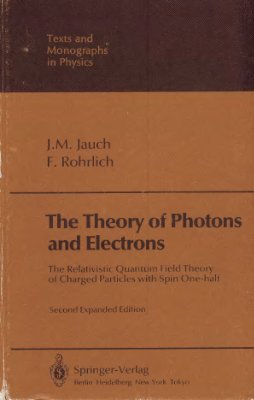The Relativistic Quantum Field Theory of Charged Particles with
Spin One-half. Second Expanded Edition. With 64 Figures.
Springer-Verlag Berlin Heidelberg New York 1976.
A standard reference and text on quantum electrodynamics since its first publication in 1955, this particularly systematic presentation starts with first principles and deals with the general theory as well as applications to the important physical processes; both scattering and bound state problems are solved. It contains the theory of the scattering operator, space and time inversion, the Feynman diagrammatic approach, Dyson's formulation of the renormalization theory, and the exteal field approximation. Among the explicit calculations are those of Bremsstrahlung, one-photon pair annihilation and positronium annihilation, and radiative corrections, including the computation of the anomalous magnetic moment of the electron and the energy level shifts in hydrogen-like atoms.
This new edition has been updated by an addendum of new contributions and references to recent literature. The extensive mathematical appendix is particularly useful for acquiring an understanding of the general theory and a working knowledge of the field.
A standard reference and text on quantum electrodynamics since its first publication in 1955, this particularly systematic presentation starts with first principles and deals with the general theory as well as applications to the important physical processes; both scattering and bound state problems are solved. It contains the theory of the scattering operator, space and time inversion, the Feynman diagrammatic approach, Dyson's formulation of the renormalization theory, and the exteal field approximation. Among the explicit calculations are those of Bremsstrahlung, one-photon pair annihilation and positronium annihilation, and radiative corrections, including the computation of the anomalous magnetic moment of the electron and the energy level shifts in hydrogen-like atoms.
This new edition has been updated by an addendum of new contributions and references to recent literature. The extensive mathematical appendix is particularly useful for acquiring an understanding of the general theory and a working knowledge of the field.

